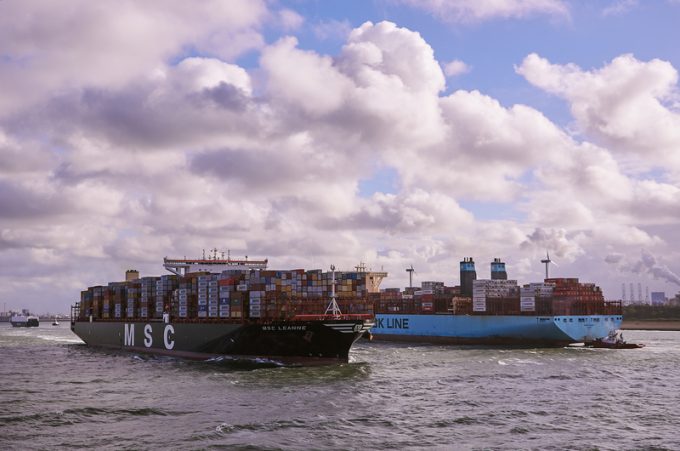
Panama Canal draught restrictions on one side of the world and Yemen-based Houthi rebels attacking shipping transiting the Red Sea enroute to the Suez Canal on the other side, are giving ocean carrier ship managers sleepless nights.
According to Destine Ozuygur, head of operations at maritime and supply chain intelligence firm eeSea, diversions of carrier proforma loops are being scaled up as more services avoid the two waterways.
“With no sign of restrictions easing in the Panama Canal and no end to the Israel-Hamas war in sight, we can expect far more traffic past the Cape of Good Hope in the coming weeks, from both the transpacific and Asia-Europe tradelanes,” said Ms Ozuygur.
There are 43 container vessels set to divert from the Panama Canal in the next few weeks, according to eeSea data, nine of these confirmed as heading past the Cape instead of transiting the Suez Canal.
Moreover, 22 vessels have been rescheduled to divert from their regular routes via the Suez Canal.
“If we tack on the nine Panama diversions that were first passing through the Suez Canal, but have now opted for the Cape, that brings the total to 31,” said Ms Ozuygur.
Ocean carrier operational departments, accustomed to planning voyages well in advance with only bad weather and port congestion requiring adjustments, are in a “state of flux”, with routing options “changing by the hour”, according to a The Loadstar carrier contact.
“I sometimes wonder if our captains know whether they are coming or going, and they certainly tell us that,” said the contact.
“It also means constantly changing ETAs for the ports, and, of course, unfortunate delays in the supply chain for our customers,” he added.
For example, a ship sailing from China to Rotterdam, taking the Cape of Good Hope route instead of transiting the Suez Canal, will add some 3,500 nautical miles to its voyage and, based on an average speed of 17 knots, take around nine days longer to arrive at the Dutch port, having consumed an extra 1,000 tons of fuel in the process.
Meanwhile, THE Alliance’s decision to re-route its three Asia-US east coast loops via the Suez Canal is under constant review.
On 6 December, Hapag-Lloyd said that, in view of January’s further reduction in the daily number of transits allowed through the Panama Canal, it had decided to switch the routing of these services through Suez.
However, the heightened danger to shipping in the Red Sea, from Iran-backed Houthi rebels, who attacked a Norway-registered tanker at the weekend and threaten to attack any ship that is identified in Israeli port data, has caused the THEA members to review that decision.
Indeed, in THEA’s 2024 network adjustments, published yesterday, the carriers noted that their transpacific Asia-US east coast loops would be “subject to the transit situation of the Panama Canal”.
